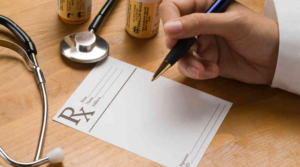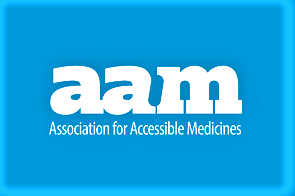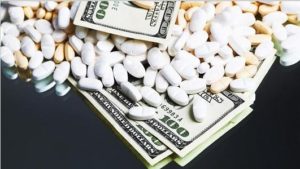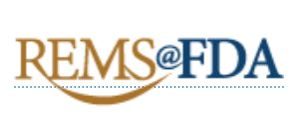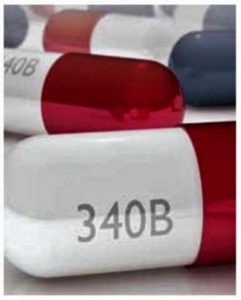- Study: FDA Did Not Verify If Opioid-Curbing Effort Worked (newsmax.com)
The FDA failed to verify whether a program designed to help control the opioid crisis actually worked because of poor oversight, according to a study published...in JAMA Internal Medicine...The findings indicate that the FDA could not determine if the program to train more than 160,000 doctors on cutting back their prescribing of opioids did any good..."What's surprising here is the design of the program was deficient from the start," the study's senior author Caleb Alexander said...READ MORE
- Legalizing medical cannabis reduces opioid overdose deaths? Not so fast, new study says (statnews.com)
The 2014 study found that between 1999 and 2010, states with medical cannabis laws had a nearly 25% lower average rate of opioid overdose deaths than states without such laws. Much has changed since 2010 — 34 states have now legalized medical marijuana and the number of opioid overdose deaths was six times higher in 2017 than it was in 1999 — so Stanford University researchers decided to replicate the original study...But when they expanded the time frame through 2017, the association between medical marijuana laws and opioid overdose deaths reversed: States with medical marijuana laws had average rates of opioid overdose deaths that were nearly 23% higher than those without these laws...READ MORE
- U.S. launches four-state study to find ways to reduce opioid overdose deaths (reuters.com)
U.S. health officials...said they will spend $350 million in four states to study ways to best deal with the nation’s opioid crisis on the local level, with a goal of reducing opioid-related overdose deaths by 40 percent over three years in selected communities in those states...The National Institutes of Health will award grants to...the University of Kentucky, Boston Medical Center, Columbia University and Ohio State University...The plan calls for the research centers to work with at least 15 communities hard hit by the crisis to measure how integrating prevention, treatment and recovery interventions can reduce overdoses...READ MORE
- Doctor payments drove scripts for cancer drugs from Pfizer, Novartis and more: study (fiercepharma.com)
Critics often target physicians who receive money from pharma, but the exact influence those payments have on prescribing is up for debate. In oncology, at least, it’s not one-off payouts but consistent compensation that's most likely to sway prescribing behavior...the study showed that physicians who received payments over three consecutive years and tied to a specific drug boosted their prescriptions of that product. That pattern applied to oral drugs that treat lung cancer, kidney cancer and chronic myeloid leukemia...Among physicians who received payments from drug companies during only one year, no pattern emerged...
- Generic Drug Pricing Trends (drugtopics.com)
According to the Association for Accessible Medicines 2019 report with data from IQVIA, generic drug savings totaled $293 billion in 2018, which resulted in a 10-year savings of almost $2 trillion. Other key findings include that 4 billion generic prescriptions were filled across the U.S. in 2018, which is 90% of all dispensed prescriptions. Additionally, 95% of generic prescriptions were filled at $20 or less with an average copay of $5.63 whereas the average brand copay is $40.65. In 2017, patients who were prescribed more expensive brand products were 2-3 times more likely to leave the pharmacy without their prescriptions...There were 68,353 pharmacy stores that provided cash prices for the study; results revealed that independent pharmacies and small chains had the highest cash prices for generic drugs, while big box pharmacies had the lowest prices compared with large chains...READ MORE
- Prescription drug costs steadily soar, yet price transparency is lacking (sciencedaily.com)
After reviewing tens of millions of insurance claims for the country's 49 most popular brand-name prescription drugs, a team from Scripps Research Translational Institute found that net prices rose by a median of 76 percent from January 2012 through December 2017 -- with most products going up once or twice per year...The substantial price increases were not limited to drugs that recently entered the marketplace, as one might expect, or to those lacking generic equivalents. In addition, the increases often were "highly correlated" with price bumps by competitors...READ MORE
- FDA oversight of the prescribing of fentanyl products is inadequate, report finds (healthcarefinancenews.com)Assessment of the FDA Risk Evaluation and Mitigation Strategy for Transmucosal Immediate-Release Fentanyl Products (jamanetwork.com)
The Food and Drug Administration and manufacturers did not take action when evidence emerged that potentially lethal fentanyl products were being inappropriately prescribed to patients, new research...shows...even as evidence emerged that as many as half of patients were taking dangerous medications known as TIRFs that should never have been prescribed to them, the FDA and fentanyl makers did not review prescribing records of even a single physician to consider disqualifying them from the program, which would have prevented them from prescribing the products...The study focused on Transmucosal Immediate-Release Fentanyls, or TIRFs, which are more dangerous than most prescription opioids on the market due to their very high potency and rapid onset. TIRFs are designed to get into the bloodstream within seconds, and because of their risks, were approved by FDA only for adult cancer patients "who are already receiving and who are tolerant to opioid therapy for their underlying persistent cancer pain."
- Here’s How PBMs and Specialty Pharmacies Snag Super-Size Profits from the 340B Program (drugchannels.net)
...let’s follow the prescription dollar to expose how specialty pharmacies and covered entities profit from 340B prescriptions...You’ll see the indisputable prescription math that permits large specialty pharmacies to share in the 340B discounts that covered entities earn. These pharmacies’ profits can be $1,000 per prescription—far exceeding their typical profits from dispensing a third-party-paid prescription...No wonder PBMs and specialty pharmacies are racing to become 340B contract pharmacies!...READ MORE
- Hey, big spender: Pharma’s $6.6B TV ad outlay outranks most other industries, report says (fiercepharma.com)
Pharma is the fourth-largest spender on TV ads in the U.S., with $6.6 billion spent over the past year. That’s according to MediaRadar’s annual study of TV ad spending, which includes OTC drug ads in its total that push it higher than other tallies...While likely no surprise to most TV viewers, only retail ($8.7 billion), financial and real estate ($7.9 billion) and tech ($7.4 billion) serve up more TV ads than pharma. The industry edged out automakers ($6 billion), a traditional TV ad stronghold that’s been dropping media spend as car sales continue to decline...The top-spending pharma companies...Pfizer, AbbVie and GlaxoSmithKline. Pfizer spent most on brands Chantix and Eucrisa, while AbbVie spent on Humira, Orilissa and Mavyret. GSK spent more of its TV dollars on prescription product Breo Ellipta, but also on consumer brands Sensodyne and Flonase....READ MORE
- Expired drugs may remain effective, safe to use in a pinch (reuters.com)Expired Drugs in the Remote Environment (wemjournal.org)
Even medicines that are years past their expiration date and haven’t always been kept in strict climate-controlled conditions may still retain their original potency, a small study suggests...That is good news for people working in remote areas of the world where sometimes an expired medication is the only one available and the alternative is having no way to treat a serious illness...This date is not necessarily the point at which the drug becomes ineffective or dangerous, and for many medications, this window may be far longer than the usual two-to-three-year expiry date...The study team tested the stability of five expired drugs that had been returned from the British Antarctic Survey...They tested five types of drug, all one to four years past expiration, and compared these to fresh samples of the same medications to see if the expired versions were chemically stable and retained their active ingredient...Researchers found that all of the tested drugs were stable, and would, theoretically, have still been effective...

